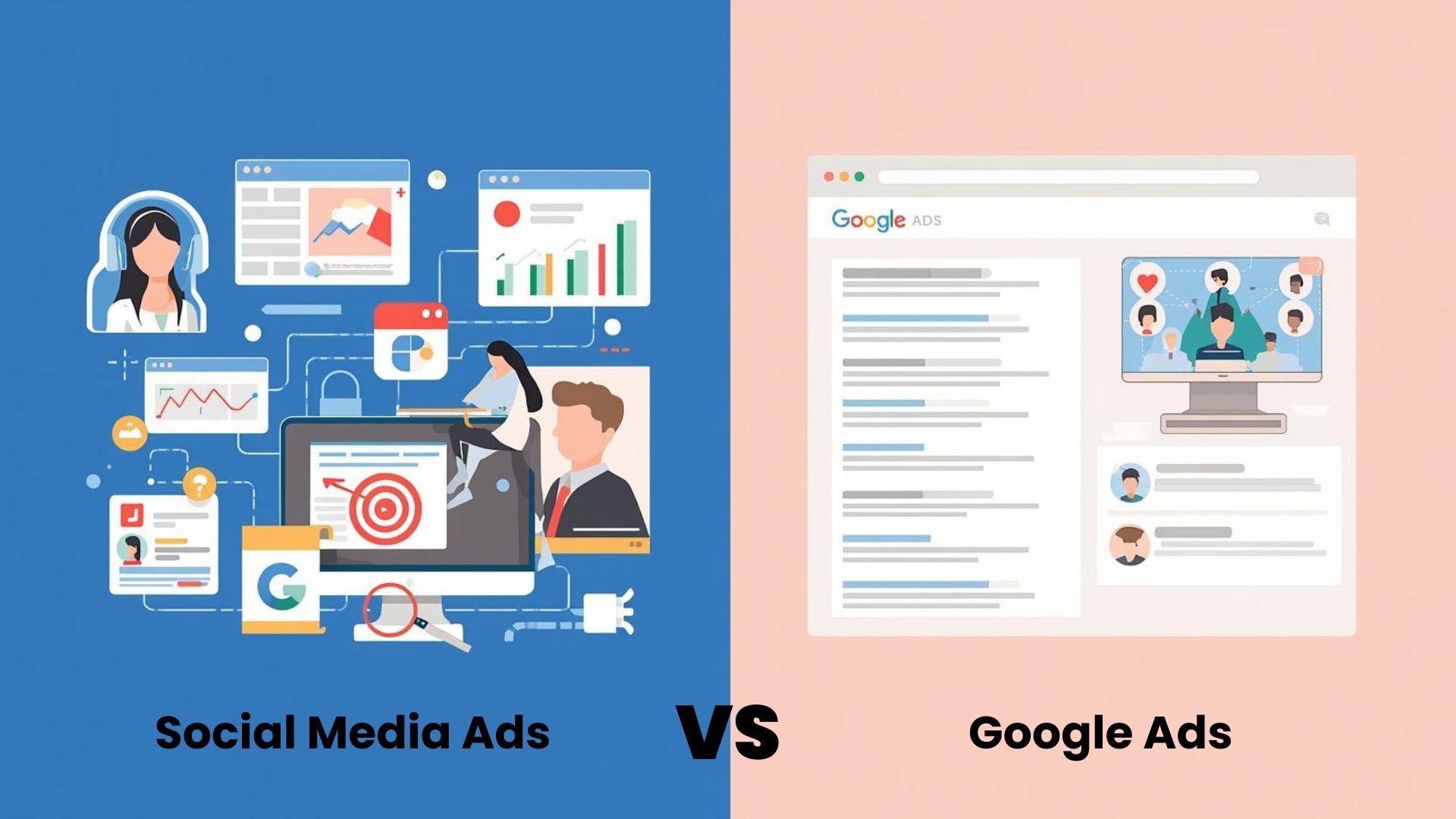Panamedia | Digital Marketing Agency in Dubai

The debate between Google Ads and social media advertising hasn’t subsided in 2026; on the contrary, it has become even more relevant. With AI redefining the digital advertising landscape and user behavior evolving across platforms, marketers are constantly evaluating which channel offers the best ROI, ROAS, and long-term value.
On one hand, Google Search remains the dominant search engine for intent-based targeting. When a user is actively searching for a product, service, or solution, Google Ads and Performance Max (PMax) campaigns kick in at the opportune moment. On the other hand, Meta Ads Manager, TikTok ads, Instagram ads, and even LinkedIn ads are designed to capture attention. Meanwhile, users browse, discover, and interact with content, but not necessarily when they’re ready to buy.
At its core, this is why the comparison persists: Google focuses on intent-based search, while social media focuses on interest-based discovery. Both are powerful, but they serve different roles in a full-funnel strategy in 2026.
Google Ads: Users come with high intent. They’re typing queries like “best CRM for small business,” “dentist near me,” or “buy running shoes online”. This is why paid search remains one of the most reliable acquisition methods, especially for lead generation and e-commerce.
Social Media Advertising (Meta, TikTok, Instagram, LinkedIn): People aren’t actively searching—they’re scrolling. Ads appear based on demographics, behavior, interests, and algorithmic predictions. This makes paid social perfect for building visibility, growing communities, and shaping brand perception.
Google attracts people who are ready to act, while social platforms help create demand among users who have not yet searched.
Google remains unmatched in capturing users who are already comparing options or ready to purchase. This environment is ideal for:
Google Shopping Ads, YouTube Ads, and Search campaigns all contribute to fast, measurable results.
Google Ads’ strength lies in its data and structure:
Marketers appreciate the predictability of CPC, CPA, and ROAS on search.
Google’s ad strategies for 2026 are heavily influenced by the following:
Google’s algorithms now optimize ads in real time based on user behavior, device signals, and intent levels, leading to better cost efficiency—one reason budgets continue to rise on the platform.
Social platforms dominate the upper funnel:
Reels, Stories, TikTok Shorts, and interactive formats help brands stay memorable.
Meta Advantage+ campaigns, TikTok’s behavior-based algorithm, and LinkedIn’s professional targeting let advertisers reach people with:
Social media excels at creating demand before users are ready to buy.
Short-form video is the king of 2026. Brands rely on:
UGC (User-Generated Content) drives higher engagement and scroll-stop rates, making social ads more emotionally impactful.
CPCs have risen on both platforms, but the cost structure differs:
A hybrid strategy balances speed and scalability.
Multi-touch attribution is essential in 2026:
This makes cross-platform tracking and unified KPIs essential.
Google Ads is the go-to for:
If your product solves a problem users are actively searching for, paid search wins almost every time.
Social platforms shine for:
They’re also ideal for influencer collaborations and social commerce.
A hybrid strategy remains unbeatable:
This creates a full-funnel journey: Awareness → Consideration → Conversion → Retention
There’s no universal winner in the “Google Ads vs. Social Media Ads” conversation in 2026. Each platform serves a different purpose:
The smartest strategy isn’t choosing one over the other—it’s using both together, aligning each platform with your objectives, and letting a full-funnel approach guide your advertising decisions.